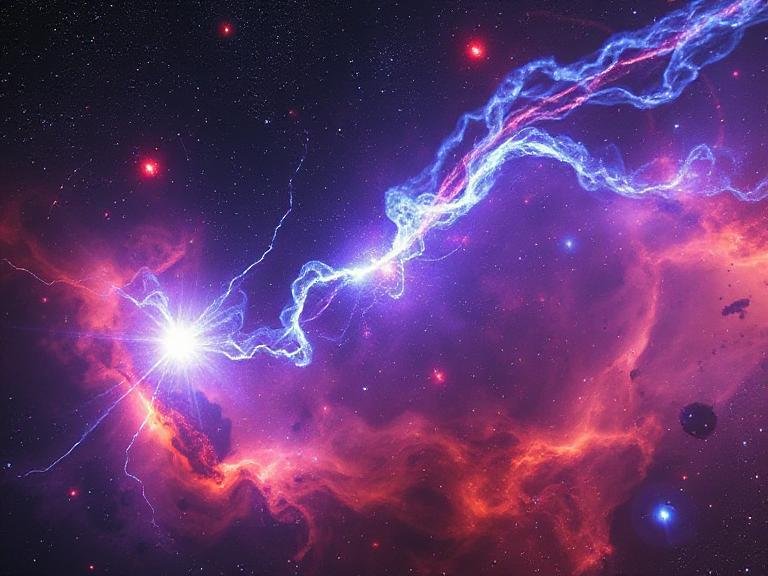
Scientists Explore a Fifth Force to Solve One of the Universe’s Oldest Mysteries
In a lab at ETH Zurich, a team of physicists has achieved something extraordinary: measuring the behavior of calcium atoms with mind-blowing precision — down to 100 millihertz. Working alongside researchers from Germany and Australia, they’ve uncovered subtle anomalies in atomic transitions that, while not yet proof, could point to physics beyond the Standard Model — possibly even a fifth fundamental force.
This isn’t a bold claim. The team isn’t declaring a discovery. But their work is pushing the boundaries of measurement science and tightening the leash on what new physics could look like.
Why the Standard Model Isn’t Enough
The Standard Model of particle physics is one of humanity’s greatest scientific achievements. It explains how particles interact through three of the four known forces (electromagnetism, strong and weak nuclear forces — gravity is separate). But it has glaring gaps.
It doesn’t explain dark matter, dark energy, or why matter dominates over antimatter. And that’s why physicists have long searched for signs of new particles or forces — interactions that don’t fit the current framework.
One possibility? A fifth force that acts between electrons and neutrons, carried by a hypothetical particle. To test this, the team turned not to massive colliders, but to trapped calcium ions — tiny atomic systems where even the smallest deviations can speak volumes.
How They Measured the Unmeasurable
The researchers focused on two specific energy transitions in calcium ions:
- ³P₀ → ³P₁ in highly charged Ca¹⁴⁺
- ²S₁/₂ → ²D₅/₂ in singly charged Ca⁺
These transitions were studied across five stable isotopes of calcium (Ca⁴⁰, Ca⁴², Ca⁴⁴, Ca⁴⁶, and Ca⁴⁸), all sharing 20 protons but differing in neutron count. The goal? To measure tiny differences in energy levels — known as isotope shifts — with extreme accuracy.
To do this, they used an ion trap, holding two isotopes simultaneously and measuring them side by side. This clever method canceled out environmental noise — things like magnetic fluctuations or temperature changes — allowing them to detect frequency differences as small as 0.1 Hz.
As doctoral student Luca Huber explained:
“By measuring two isotopes at the same time, we eliminate a lot of external errors. It’s like comparing two watches ticking next to each other instead of days apart.”
Meanwhile, partner teams contributed ultra-precise measurements of nuclear mass ratios, with uncertainties below 4 × 10⁻¹¹ — among the most accurate ever achieved.
The Plot That Wouldn’t Behave: A Curve Where There Should Be a Line
With all the data in hand, the team created a King plot — a graphical tool used to test whether isotope shifts follow predictable patterns based on known nuclear effects.
Here’s the rule:
✅ If all points fall on a straight line, known physics explains everything.
❌ If they curve, something unaccounted for is at play.
And in this case? The data clearly curved — with a statistical significance of about 10³ σ. That’s not a fluke. That’s a red flag waving from the edge of known physics.
“This nonlinearity suggests there’s more going on than what the Standard Model predicts,” said Professor Diana Prado Lopes Aude Craik of ETH Zurich. “If everything followed known nuclear structure effects, we’d see a straight line. We don’t.”
So, What’s Causing the Curve?
The team didn’t jump to “new physics” immediately. They ran rigorous calculations to rule out known effects.
The biggest candidate within the Standard Model — the second-order mass shift — turned out to be too small to explain the deviation.
The only remaining plausible explanation from known physics? Nuclear polarization — a subtle effect where the electron cloud slightly distorts the nucleus, changing its energy response. But here’s the catch: this phenomenon isn’t well understood, and current models can’t yet quantify it precisely enough to confirm if it’s responsible.
That leaves the door open — slightly — for something more exciting: a new force.
Narrowing the Hunt for a Fifth Force
Even without confirmation, the experiment is a major step forward. The team used their data to refine the limits on a hypothetical Yukawa-type interaction — a short-range force that could be carried by a new boson (like the proposed X17).
Their results rule out or constrain certain mass ranges for such a particle, particularly between 10 eV/c² and 10⁷ eV/c². In other words, if this force exists, it now has fewer places to hide.
And the team isn’t stopping here. They’re already working on measuring a third atomic transition in calcium — one that could help disentangle nuclear effects from potential new physics.
“We hope this will help us overcome the theoretical challenges and make further progress in the search for a new force,” said Aude Craik.
Why This Matters — Even If You’re Not a Physicist
This research is a powerful reminder that big discoveries don’t always come from big machines. While the LHC smashes protons at near-light speed, precision experiments like this one probe the universe at the quietest, most delicate level — where a fraction of a hertz can shake the foundations of physics.
It shows how ultra-precise atomic clocks, ion traps, and quantum control are becoming tools not just for timekeeping, but for testing the laws of reality itself.
We may not have found a fifth force yet. But we’re closer than ever to knowing where — and how — to look.
Source: ETH Zurich, American Physical Society





